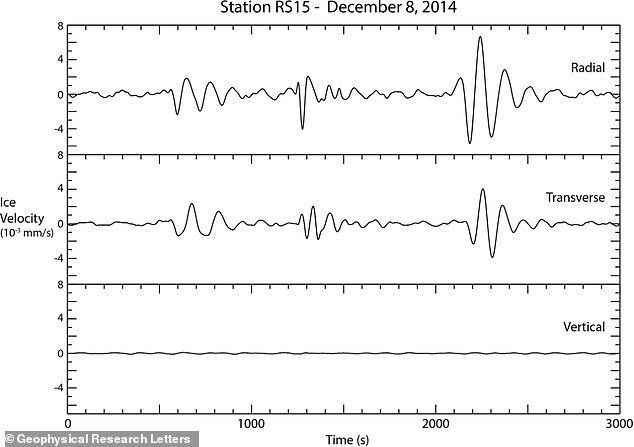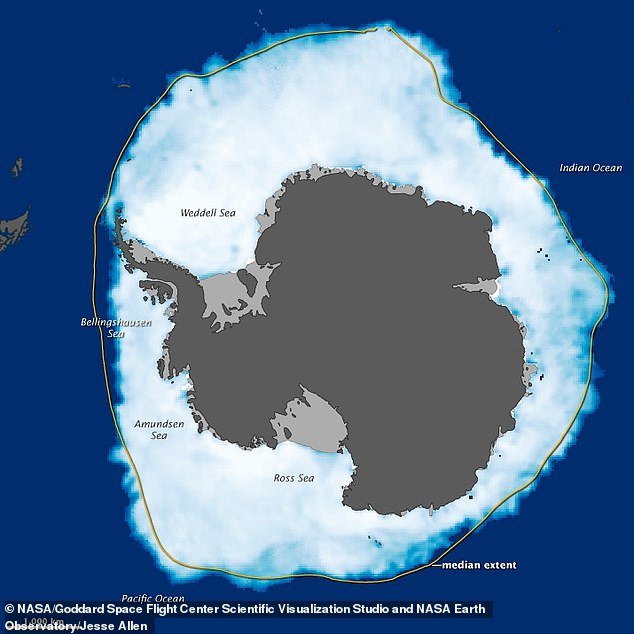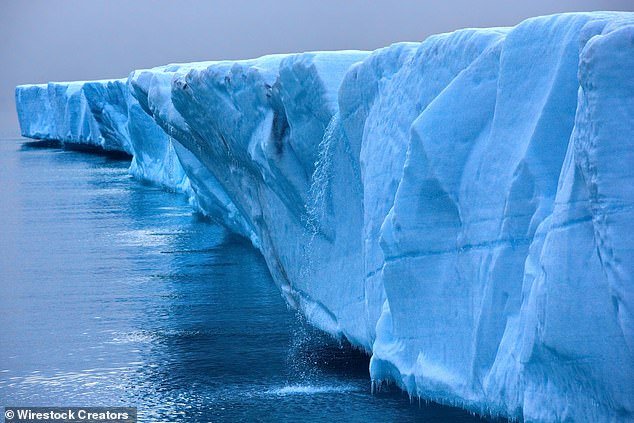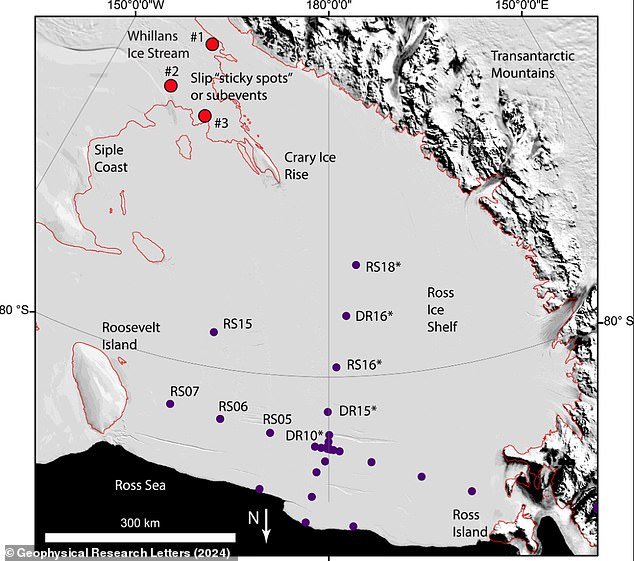Antarctic ice shelf the size of France is suddenly JUMPING twice a day – and scientists warn it could cause a devastating icequake
Antarctica’s largest ice shelf is moving and could cause icequakes, a new study warns.
Researchers discovered that the Ross Ice Shelf – an ice platform covering almost 320,000 square kilometers, just shy of the size of France – suddenly jumps twice a day.
The sudden ‘slip’ is caused by two pieces of ice moving against each other, somewhat like the movement of plate tectonics that causes earthquakes.
The phenomenon, identified for the first time in a new study, could cause fractures in the ice shelf, making it more susceptible to breaking apart.
It can also cause ‘icequakes’: seismic events that can be dangerous to nearby animals or explorers.
Ice shelves are permanent floating ice shelves that connect to a landmass. Pictured is the Ross Ice Shelf, Antarctica’s largest ice shelf

Researchers studied data from ‘seismometers’ – small devices that record ground noise and movement – stationed around Antarctica. This image shows seismic data caused by ice in Antarctica in December 2014
The study was led by Professor Doug Wiens, a geophysicist at Washington University in St. Louis, Missouri and published in Geophysical research letters.
“We found that once or twice a day, the entire board suddenly moves about 6 to 8 centimeters (or 3 inches),” he said.
‘These sudden movements could potentially play a role in causing icequakes and faults in the ice shelf.’
Ice shelves are large floating ice platforms that connect to a landmass, such as Antarctica, although they also occur in other polar locations such as Greenland.
These plates act as a protective buffer for the continental ice and prevent the entire Antarctic ice sheet from flowing into the ocean, which would dramatically raise global sea levels.
Fractures or any form of weakening of the ice shelves could therefore cause them to break up in the coming decades, with serious consequences for coastal areas.
There are about 300 ice shelves spread across Antarctica and together they cover about three-quarters of the Antarctic coastline.
Professor Wiens and colleagues focused on the Ross Ice Shelf, which, about the size of France, is Antarctica’s largest ice shelf.

An image of Antarctica, distinguishing the landmass (dark gray), ice shelves (light gray), and sea ice (white). Ross Ice Shelf, Antarctica’s largest ice shelf, is located in the south
They studied data from ‘seismometers’ that they placed on the continent in 2014: small devices that record ground sounds and movements.
Scientists say there is a fast-moving river or ‘conveyor belt’ of ice, the Whillans Ice Stream, flowing into the Ross Ice Shelf.
The movement of the Ross Ice Shelf is caused by a sudden movement of the Whillans Ice Stream, known as a ‘slip event’, similar to the movement of plate tectonics that causes earthquakes.
The researchers found that much of the 100 by 100 kilometer Whillans ice stream remains stationary, while the rest of the ice stream creeps forward – an intersection described as a ‘sticky spot’.
Then, once or twice a day, the large section lurches forward against the Ross Ice Shelf.
It can move up to 16 inches in a few minutes, but if there was a human nearby, it wouldn’t be able to tell it was happening.
“You cannot perceive the movement just by feeling it,” said Professor Wiens.
‘The movement takes place over a period of several minutes and is therefore undetectable without instrumentation.’

The Ross Ice Shelf (pictured) is a floating ice shelf that extends across the ocean. Scientists are interested in the interactions between ice shelves and ice streams in part because they worry about the stability of Antarctica’s ice shelves in a warming world

This image of the Ross Ice Shelf area highlights seismic stations, shown as blue circles. The locations of Whillans Ice Stream slip sites are shown as red circles
However, the researchers do not think that this slip event and others like it are directly related to human-induced global warming.
One theory is that they are caused by water loss in the bottom of the Whillans Ice Stream, making it more ‘sticky’.
However, interactions between ice shelves and ice flows can still reveal more about the stability of Antarctica’s ice shelves in a warming world.
“Right now, icequakes and faults are just part of the normal life of the ice shelf,” says Professor Wiens.
‘There are concerns that the Ross Ice Shelf will one day break up, as other smaller and thinner ice shelves have done so too.’
